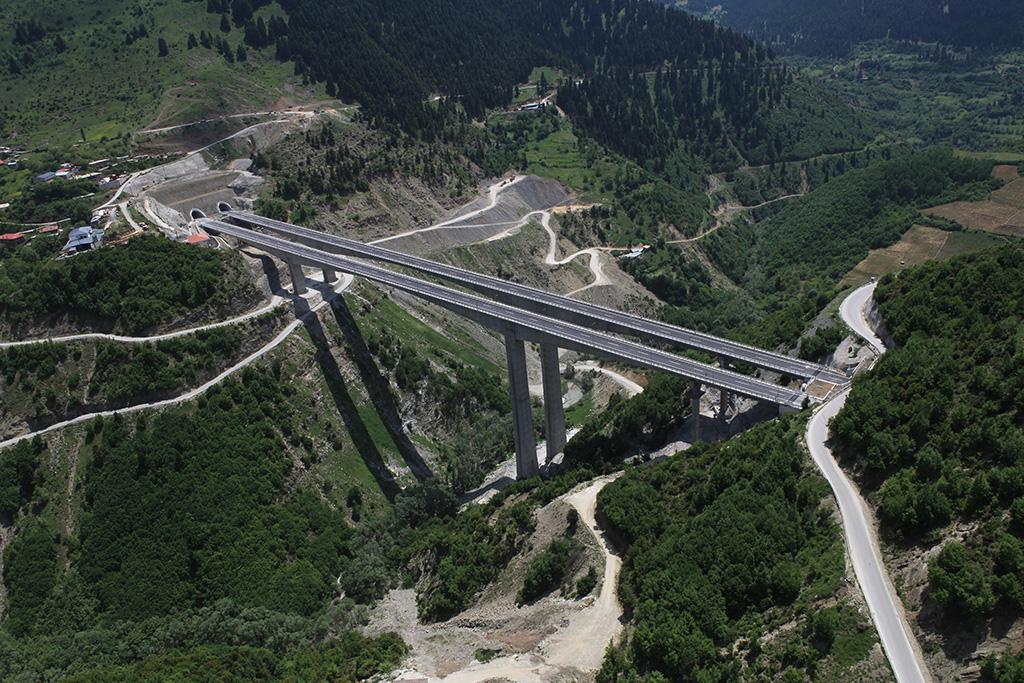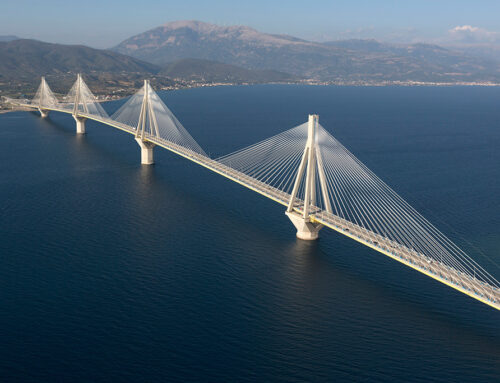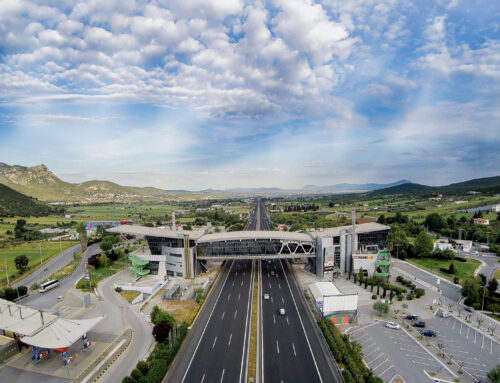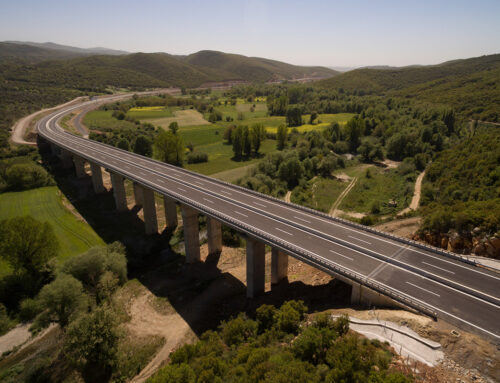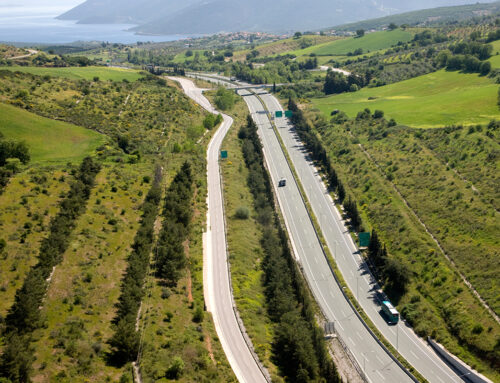Significance
The Egnatia Motorway and its vertical axes are the backbone of Northern Greece transport system. With a length of 657 km, it is the first high standard road axis that runs “horizontally” through Greece from Igoumenitsa to Kipoi-Evros. It shortens distances and brings areas like Epirus, Western Macedonia and Thrace out of their isolation. It multiplies investment in transport, industry and tourism.
The Egnatia Motorway is the most important modern infrastructure project concerning the development and communication of our country with Europe, the Balkans and Asia Minor. It is part of the Trans-European Transport Network. The Egnatia Motorway is also a collector route for the Balkan and South-eastern European transport system. Pan-European Corridors IV (Berlin – Sofia – Thessaloniki), IX (Helsinki – Alexandroupolis) and X (Vienna – Belgrade – Thessaloniki) all end at the Egnatia Motorway.
The motorway is connected with 4 ports, 6 airports and 9 vertical axes that ensure access to the countries of South-Eastern Europe.
Along the route of the Egnatia Motorway, one can find areas of exquisite natural beauty (e.g. the mountainous areas of Northern Pindos, the wetlands of Aliakmonas, Strimonas, Nestos and Evros Rivers, Koroneia and Volvi Lakes) and of unique historic importance (e.g. the archaeological site of Dodoni, the remains of ancient Egnatia etc.).
Technical Characteristics
The Egnatia Motorway is a highway of international standards; its total length is 670 km and its cross section 24.5m (22 m in mountainous areas). It is a dual carriageway separated by a median, with two traffic lanes and a hard shoulder per direction, except for a 45 km long section (Klidi – Thessaloniki – Derveni) that has three traffic lanes and a hard shoulder per carriageway.
Tunnels
The Egnatia Motorway has a total of 73 road tunnels of an overall combined length of 50 km (100 km measured as single bore). This means that 7% of the overall length of the motorway is being carried through tunnels. Their construction cost -including all E&M systems-amounts to 30% of the total estimated construction cost.
The majority is bored tunnels, while in certain cases the cut&cover construction has been applied to. Fifteen (15) of these tunnels are classified as large, with lengths ranging from 800 m to 4.6 km.
All tunnels are twin-bore ones. Each traffic direction is carried through a separate bore and a main consideration in their design is the provision for cross passages connecting the tunnel bores to ensure safe passage in case of a fire emergency. Special emphasis is laid on the installation of a high standard monitoring and control system, which ensures the safe operation of tunnels.
Structures
Along the axis of the Egnatia Motorway there are about 177 large structures (bridges, over / underpasses) with a length of over 50m., and more than a thousand small culverts of a span of up to 6 m. The major structures of the axis comprise bridges with special features, such as lengths of 1,000 m., individual spans up to 235 m and pier heights of 110 m.
For more information, please consult: www.egnatia.eu

